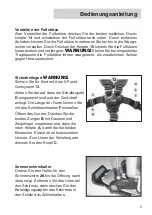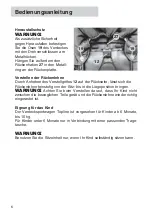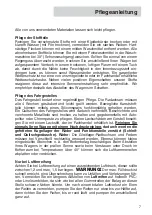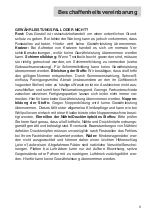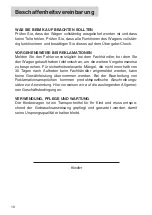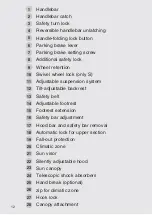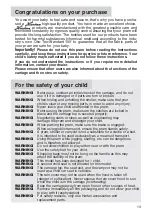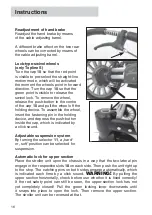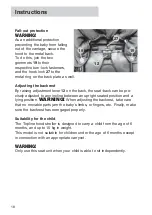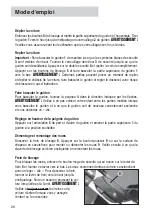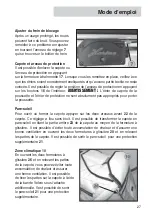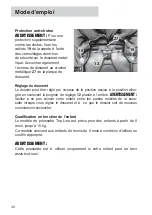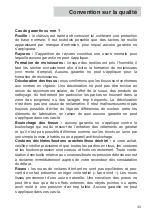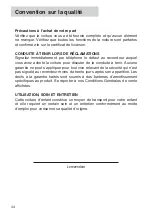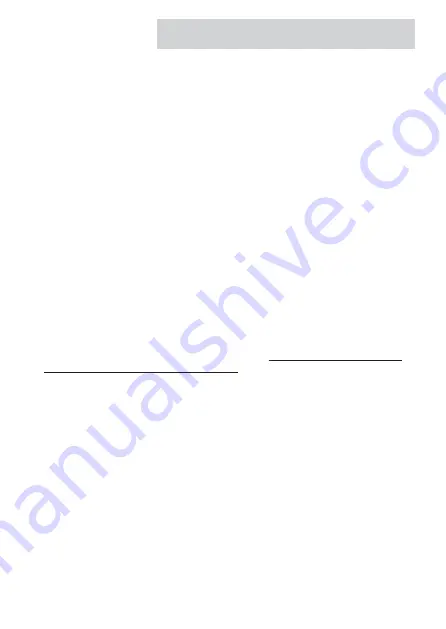
Care and maintenance
19
All the materials we use can easily be cared for.
Care of the fabric parts
Clean soiled fabrics when dry using a clothes-brush or lukewarm water (then
use hair dryer). Do not rub fabrics extensively. Remove tenacious stains
using a soft detergent. All removable fabric parts may be machine washed in
lukewarm water at a gentle setting and reduced agitation, at 30 °C. Let‘s say
you have encountered a heavy rain shower. Dry your carriage with the hood
still on in a dry and airy room using a cloth. This prevents marking as well
as the underlining fabrics from moist soaking in through the seams. As a
guaranteed protection against rain, we recommend that you use our rain
cover, which is either included or can be purchased at your dealer‘s. Our
fabrics have quite a number of distinctive features. However, they are very
sensitive to excessive sunlight. That‘s why you should park your carriage in
the shade whenever possible.
Care of the chassis
The chassis requires regular care. You should clean and slightly lubricate
the wheel axles at a regular 4-weeks interval. Use a silicone based lubricant
spray for all moving plastic parts to maintain them in an operative condition.
Keep all coated and chrome-plated metal parts in dry condition, and use a
finish restorer or chrome paste if necessary. Remove smaller chassis paint
damages by means of a touch-up applicator.
Do not use high-pressure
cleaners when cleaning your carriage, due to risk of damaging the ball
bearings of the wheels (greased) and other functional parts (grinding
and creaking noise). Wheels:
Overpressure may result in accidents and
personal injuries. Replace worn plain wheel bearings and springs in time.
Replace worn plain wheel bearings and springs in time. Little stones in the
thread, etc. may just as well damage the floor covering. When parking the
carriage in the blazing sun or cramming it in the boot at temperatures of
above 40°C, the semi pneumatic tires may flatten or become deformed.
For pneumatic tires
When using pneumatic wheels, make sure they have got enough air in the
tire. Specified tire inflation pressure should be between 1.2 and 1.5bar max.
WARNING!
Max. tire pressure will be reached quickly. Tires tend to lose
air over time. When blowing up a flat tire, inflate it only halfway first, and
make sure the tire is evenly seated, to avoid “wobble”. Replace worn plain
wheel bearings and springs in time. Then continue to inflate it to the proper
pressure.
Summary of Contents for Topline S
Page 3: ...26 27 28...
Page 15: ...United Kingdom UK GB...
Page 27: ...F La France...
Page 39: ...NL Nederlands...
Page 51: ...DK Danmark...
Page 63: ...N Norge...
Page 75: ...Sverige S...
Page 87: ...Suomi FIN...
Page 99: ...95...
Page 100: ...96...

